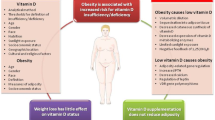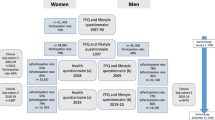Abstract
Accumulated data suggests a positive effect of silicon on bone health; however, limited research exists on the silicon content of foods. To further the understanding of the relationship between dietary silicon intake and bone health, a food composition database of commonly consumed foods in Korea is required. For quantitative data on the intake levels of silicon, we analyzed the silicon content of 365 food items commonly consumed in Korea using inductively coupled plasma—atomic emission spectrometry following microwave-assisted digestion. To investigate the dietary silicon intake status and to examine the potential role of dietary silicon intake in the bone status of men, a total of 400 healthy Korean adult males aged 19–25 were observed for their diet intake and calcaneus bone density using the 24-h recall method and quantitative ultrasound, respectively. Clinical markers reflecting bone metabolism such as serum total alkaline phosphatase, N-mid osteocalcin, and type 1 collagen C-terminal telopeptide concentrations were also analyzed. Silicon intake of the subjects was estimated as 37.5 ± 22.2 mg/day. Major food sources of dietary silicon in the Korean male were cereal and cereal products (25.6 % of total silicon intake), vegetables (22.7 %), beverages and liquors (21.2 %), and milk and milk products (7.0 %). Silicon intake correlated positively with age, weight, energy intake, protein intake, calcium intake, and alcohol intake. After adjusted for age, weight, energy intake, protein intake, calcium intake, alcohol intake, smoking cigarettes, and regular exercise status, daily total silicon intake had no correlation with calcaneus bone density and the bone metabolism markers, but silicon intake from vegetables had a positive correlation with serum total alkaline phosphatase activity, a bone formation maker. These findings show the possible positive relationship between dietary silicon intake from vegetables and the bone formation of young adult males. Further investigation in a larger (Korean) population and correcting for additional nutritional confounders is required to confirm these findings.
Similar content being viewed by others
References
Nielsen FH (2014) Update on the possible nutritional importance of silicon. J Trace Elem Med Biol 28:379–382
Jugdaohsingh R (2007) Silicon and bone health. J Nutr Health Aging 11:99–110
Jugdaohsingh R, Watson AI, Pedro LD, Powell JJ (2015) The decrease in silicon concentration of the connective tissues with age in rats is a marker of connective tissue turnover. Bone 75:40–48
McNaughton SA, Bolton-Smith C, Mishra GD, Jugdaohsingh R, Powell JJ (2005) Dietary silicon intake in post-menopausal women. Br J Nutr 94:813–817
Powell JJ, McNaughton SA, Jugdaohsingh R, Anderson SH, Dear J, Khot F, Mowatt L, Gleason KL, Sykes M, Thompson RP, Bolton-Smith C, Hodson MJ (2005) A provisional database for the silicon content of foods in the United Kingdom. Br J Nutr 94:804–812
Pennington JA (1991) Silicon in foods and diets. Food Addit Contam 8:97–118
Jugdaohsingh R, Anderson SH, Tucker KL, Elliott H, Kiel DP, Thompson RP, Powell JJ (2002) Dietary silicon intake and absorption. Am J Clin Nutr 75:887–893
Jugdaohsingh R, Tucker KL, Qiao N, Cupples LA, Kiel DP, Powell JJ (2004) Dietary silicon intake is positively associated with bone mineral density in men and premenopausal women of the Framingham Offspring cohort. J Bone Miner Res 19:297–307
Macdonald HM, Hardcastle AC, Jugdaohsingh R, Fraser WD, Reid DM, Powell JJ (2012) Dietary silicon interacts with oestrogen to influence bone health: evidence from the Aberdeen Prospective Osteoporosis Screening Study. Bone 50:681–687
Ministry of Health & Welfare (2006) Report on 2005 national health and nutrition examination survey—nutrition survey. Ministry of Health & Welfare, Seoul, pp. 388–447
Bewen HJM, Peggs A (1984) Determination of the silicon content of food. J Sci Food Agric 35:1225–1229
Robberecht H, Van Cauwenbergh R, Van Vlaslaer V, Hermans N (2009) Dietary silicon intake in Belgium: sources, availability from foods, and human serum levels. Sci Total Environ 407:4777–4782
Li Z, Karp H, Zerlin A, Lee TY, Carpenter C, Heber D (2010) Absorption of silicon from artesian aquifer water and its impact on bone health in postmenopausal women: a 12 week pilot study. Nutr J 9:44
Tucker KL, Jugdaohsingh R, Powell JJ, Qiao N, Hannan MT, Sripanyakorn S, Cupples LA, Kiel DP (2009) Effects of beer, wine, and liquor intakes on bone mineral density in older men and women. Am J Clin Nutr 89:1188–1196
Seeman E, Melton LJ 3rd, O’Fallon WM, Riggs BL (1983) Risk factors for spinal osteoporosis in men. Am J Med 75:977–983
Vogel JM, Davis JW, Nomura A, Wasnich RD, Ross PD (1997) The effects of smoking on bone mass and the rates of bone loss among elderly Japanese-American men. J Bone Miner Res 12:1495–1501
Ortego-Centeno N, Munoz-Torres M, Jodar E, Hernandez-Quero J, Jurado-Duce A, de la Higuera T-PJ (1997) Effect of tobacco consumption on bone mineral density in healthy young males. Calcif Tissue Int 60:496–500
Kim MH, Chung YS, Sung CJ (2007) Negative effects of alcohol consumption and tobacco use on bone formation markers in young Korean adult males. Nutr Research:104–108
Weisman SM, Matkovic V (2005) Potential use of biochemical markers of bone turnover for assessing the effect of calcium supplementation and predicting fracture risk. Clin Ther 27:299–308
Reffitt DM, Ogston N, Jugdaohsingh R, Cheung HF, Evans BA, Thompson RP, Powell JJ, Hampson GN (2003) Orthosilicic acid stimulates collagen type I synthesis and osteoblastic differentiation in human osteoblastic-like cells in vitro. Bone 32:127–135
Kim EJ, Bu SY, Sung MK, Choi MK (2013) Effects of silicon on osteoblast activity and bone mineralization of MC3T3-E1 cells. Biol Trace Elem Res 152:105–112
Maehira F, Iinuma Y, Eguchi Y, Miyagi I, Teruya S (2008) Effects of soluble silicon compound and deep-sea water on biochemical and mechanical properties of bone and the related gene expression in mice. J Bone Miner Metab 26:446–455
Hott M, de Pollak C, Modrowski D, Marie PJ (1993) Short-term of organic silicon on trabecular bone in mature ovariectomized rats. Calcif Tissue Int 53:174–179
Kim MH, Bae YJ, Choi MK, Chung YS (2009) Silicon supplementation improves the bone mineral density of calcium-deficient ovariectomized rats by reducing bone resorption. Biol Trace Elem Res 128:239–247
Kim MH, Kim EJ, Jung JY, Choi MK (2014) Effect of water-soluble silicon supplementation on bone status and balance of calcium and magnesium in male mice. Biol Trace Elem Res 158:238–242
Acknowledgments
The research was supported by a grant from the Academic Research Program of Korea National University of Transportation in 2014.
Author information
Authors and Affiliations
Corresponding author
Rights and permissions
About this article
Cite this article
Choi, MK., Kim, MH. Dietary Silicon Intake of Korean Young Adult Males and Its Relation to their Bone Status. Biol Trace Elem Res 176, 89–104 (2017). https://doi.org/10.1007/s12011-016-0817-x
Received:
Accepted:
Published:
Issue Date:
DOI: https://doi.org/10.1007/s12011-016-0817-x




